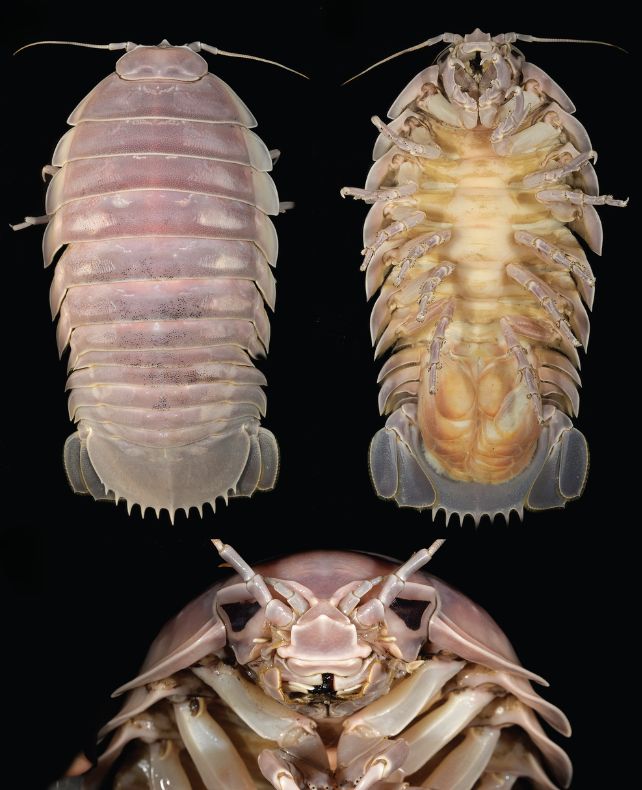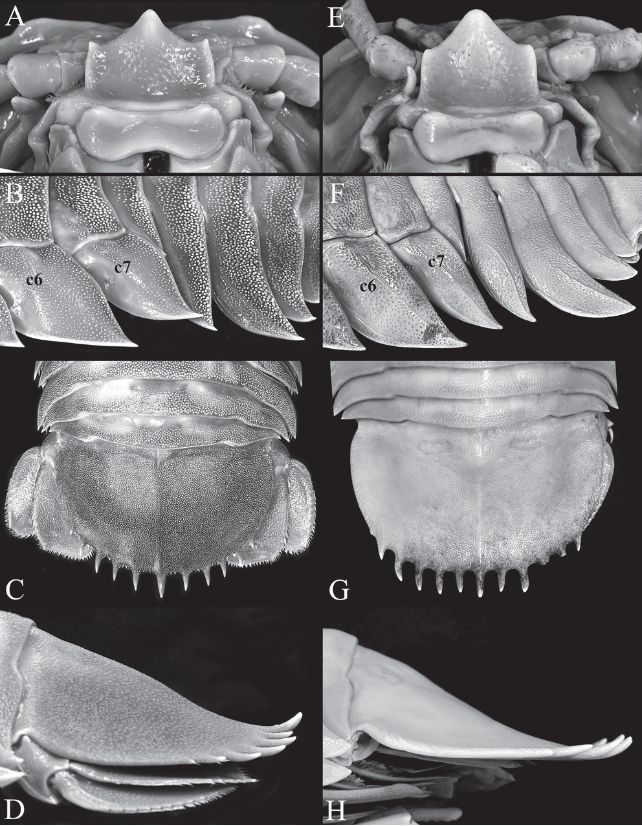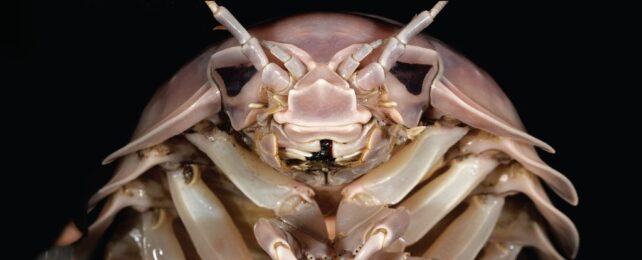In 2022, staff from Hanoi University purchased a selection of 'supergiant' isopods at a seaford market in Quy Nhơn City in Vietnam, intrigued by a burgeoning market for the deep sea crustaceans as a delicacy.
Among them was a species unknown to science at the time. National University of Singapore carcinologist Peter Ng and colleagues have now formally described the novel sea bug in a new paper.
As the head of the animal's carapace resembles the iconic scifi helmet adorned by Star Wars' infamous Darth Vader, Ng and team named the giant woodlice relative Bathynomus vaderi.

The specimens measured in at around 260 to 280 millimeters in length (just under a foot) – an impressive size that is dwarfed by the largest known Bathynomus; a beast that measures around 50 centimeters. Despite being large enough to wear a collar and having a villainous appearance, deep sea isopods are harmless to humans, feeding on decaying matter like their roly-poly and pillbug land relatives.
Weighing over a kilogram, giant isopods like B. vaderi are an example of deep-sea gigantism – a tendency for animals that dwell in the deep to grow larger than their shallow water cousins.
This evolutionary expansion may be due to the need to store food in an environment where it's scarce, or the pressure imposed by lower temperatures, as evidenced by giants that live close to Earth's glacial regions.
The six male specimens Ng and team examined were trawled from deep waters off Vietnam near the Spratly Islands and differed from previously known species such as Bathynomus jamesi, which the researchers used as a comparison in their paper.
The differences included 'tail' flaps called uropods, which unlike in B. jamesi are visible when viewed from above in B. vaderi (G and C in the images below respectively). The edges of B. vaderi's end parts are also pricklier with spiky setae between the larger spines.

This group of sea bugs are only known to have been deliberately fished for in Vietnam since 2017. They're said to taste similar to lobsters and currently fetch around US$40 per kilogram.
"Today, some seafood markets in Hanoi, Hồ Chí Minh City, and Đà Nẵng City keep up to 30 individuals in their chilled water tanks for customers to buy," the researchers explain. "The prices of these animals, however, do vary quite a bit due to supply and demand, and can cost substantially more in higher end restaurants."
It's not clear whether the Vader of Bugs features regularly on the plates of fine diners. Those seen in restaurants have so far only been identified as B. jamesi, which were apparently caught from the same area as the newly identified species.
"It is possible B. vaderi has a slightly different habitat, depth range, or distribution than B. jamesi, and what is caught depends on where individual boats trawl," Ng and team speculate, highlighting just how little we know about these remotely dwelling species.
Between trawling and the expansion of deep sea mining for minerals, oil, and gas we're creating numerous challenges for these enigmatic marine environments before even knowing the life that lives within them. This creates an urgent need to better understand these giant isopods and their sea bed neighbors to ensure they are harvested sustainably.
This research was published in ZooKeys.
